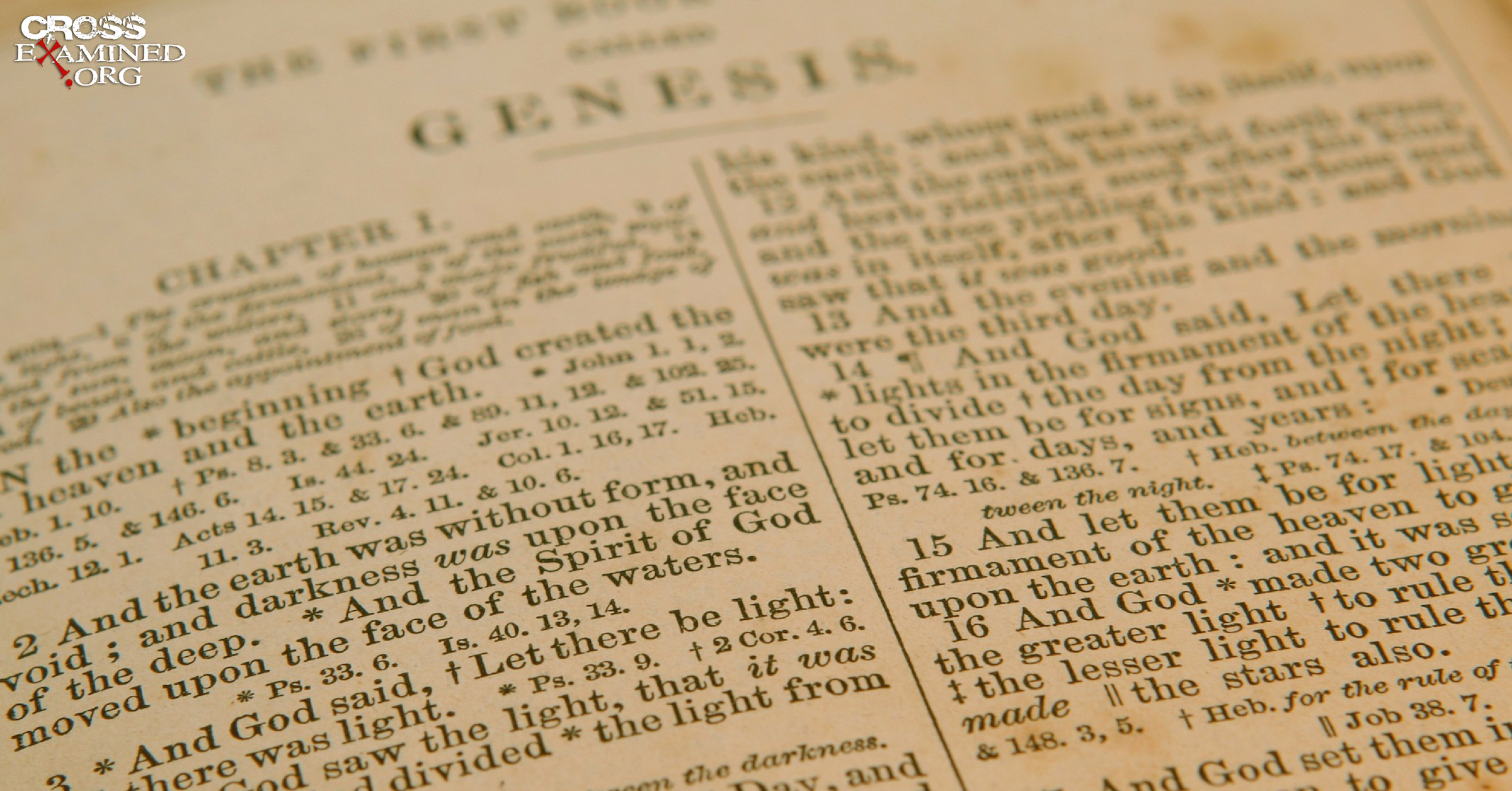A Case for the Empty Tomb (Part 2: Historical Evidence)
The previous section examined the arguments posed against the empty tomb hypothesis. The blog demonstrated in the first article that the arguments against the empty tomb hypothesis fail greatly. This article will provide a historical argument for the empty tomb hypothesis. If the Gospels are correct in that the tomb was truly empty on the first Easter Sunday, then one would expect to find that the ancient burial practices of first-century Judaism would match the type of burial that is presented in the Christian tradition. Did people in first-century Palestine bury their dead tombs like the “new tomb…cut in the rock” (Matthew 27:60)?
The canonical Gospels’ account of Jesus’ burial indeed matches the burial practices of first-century Palestine. Elwell and Beitzel denote that “Bodies were buried in tombs, that is, natural caves or rock-hewn sepulchers, such as that belonging to Joseph of Arimathea where the body of Jesus was laid (Mt. 27:59, 60), as well as in shallow graves covered with rock heaps serving both to mark them and to prevent desecration of the body by animals.”[1] Thus, even if Jesus had been buried in a shallow grave, the practices of the time did not readily allow easy access to predators. Yet, as it was noted earlier, it is highly unlikely that the Gospel writers would invent Joseph of Arimathea. Therefore, it is highly unlikely that the Evangelists would invent the empty tomb especially due to the use of a rock-hewn tombs at the time.
N. T. Wright notes that “the burial so carefully described in the gospels was, as we would expect in first-century Palestinian Judaism, the initial stage of a two-stage burial.”[2]Families would bury their dead in a rock-hewn tomb. The families would prepare the body with spices. Then after a year, the family would return to gather the bones of the departed and place them in a family ossuary.[3] Why did they conduct this practice? Wright, paraphrasing Eric M. Meyers work, notes that “secondary burial…reflects a belief in a continuing nephesh, [sic] enabling the bones to provide ‘at least a shadow of their strength in life’, with the mortal remains constituting ‘the very essence of that person in death.’”[4]Since the Evangelists’ description of the burial of Jesus matches the practices of first-century Palestinian Judaism, the empty tomb hypothesis again strengthens. But, would Pilate have granted the body of Jesus to Joseph of Arimathea?

History demonstrates that the Romans often granted clemency under certain circumstances. Craig Evans notes that Septimius Vegetus, governor of Egypt; Pliny the Younger, governor of Bithynia in Asia Minor; and an inscription from Ephesus all demonstrate that Roman officials often provided various acts of clemency towards various condemned individuals.[5] Evans goes on to say,
This mercy at times extended to those who had been crucified. Clemency sometimes was occasioned by a holiday, whether Roman or a local non-Roman holiday, or simply out of political expediency, whatever the motivation. We actually have evidence that Roman justice not only allowed for the executed to be buried, but it even encouraged it in some instances.[6]
Therefore, one will find that history provides ample evidence that not only did Palestinian Jews bury in accordance to the method prescribed by the Evangelists, but also that the Romans provided clemency for the body of the condemned to be given to the family to bury. If one remembers that the crucifixion of Jesus occurred during Passover when the bodies of the condemned were not to be allowed to remain on the cross (John 19:31), then the empty tomb hypothesis gains further merit.
This section has reviewed the historical data that confirms the empty tomb hypothesis. However, one must also query whether evidence exists that the early church believed that Jesus’ was placed in a tomb and that the tomb was found empty on the following Sunday. That topic will be evaluated in the forthcoming article next week.
Visit Brian’s Website: BellatorChristi.com
Copyright, March 21, 2016. Brian Chilton.
Notes
[1] Walter A. Elwell and Barry J. Beitzel, Baker Encyclopedia of the Bible (Grand Rapids: Baker Book House, 1988), 386.
[2] Wright, The Resurrection of the Son of God, 707.
[3] Ossuaries were burial boxes where the bones of several family members could be kept after their bodies had mostly decomposed.
[4] Eric M. Meyers, “Secondary Burials in Palestine,” The Biblical Archaeologist 33 (1970): 15, 26, in Wright, The Resurrection of the Son of God, 91.
[5] Craig Evans, “Getting the Burial Traditions and Evidences Right,” in How God Became Jesus: The Real Origins of Belief in Jesus’ Divine Nature—A Response to Bart Ehrman (Grand Rapids: Zondervan, 2014), 75.
[6] Ibid., 75-76.
Bibliography
Bird, Michael, F., et. al. How God Became Jesus: The Real Origins of Belief in Jesus’ Divine Nature—A Response to Bart Ehrman. Grand Rapids: Zondervan, 2014.
Craig, William Lane. Reasonable Faith: Christian Truth and Apologetics, 3rd Edition. Wheaton: Crossway, 2008.
Davis, Stephen; Daniel Kendall, SJ; and Gerald O’Collins, SJ, eds. The Resurrection. Oxford, UK: Oxford University Press, 2004.
Ehrman, Bart. How Jesus Became God: The Exaltation of a Jewish Preacher from Galilee. New York: HarperOne, 2014.
Erickson, Millard J. Christian Theology. Second Edition. Grand Rapids: Baker Academic, 1998.
Elwell, Walter A., and Barry J. Beitzel. Baker Encyclopedia of the Bible. Grand Rapids: Baker Book House, 1988.
Geisler, Norman L. Baker Encyclopedia of Christian Apologetics. Baker Reference Library. Grand Rapids: Baker Books, 1999.
_______________., and Frank Turek. I Don’t Have Enough Faith to Be an Atheist. Wheaton: Crossway, 2004.
_______________. Systematic Theology: In One Volume. Minneapolis: Bethany House, 2011.
Habermas, Gary R. The Historical Jesus: Ancient Evidence for the Life of Christ. Joplin, MO: College Press, 2011.
_______________., and Michael R. Licona. The Case for the Resurrection of Jesus. Grand Rapids: Kregel, 2004.
_______________. The Risen Jesus & Future Hope. Lanham, MD: Rowman & Littlefield, 2003.
Kreeft, Peter, and Ronald K. Tacelli. Handbook of Christian Apologetics: Hundreds of Answers to Crucial Questions. Downers Grove: IVP Academic, 1994.
Licona, Michael R. The Resurrection of Jesus: A New Historiographical Approach. Downers Grove: IVP Academic, 2010.
Meyers, Eric M. “Secondary Burials in Palestine.” The Biblical Archaeologist 33 (1970): 2-29. In N. T. Wright. The Resurrection of the Son of God. Volume 3. Christian Origins and the Question of God. Minneapolis: Fortress Press, 2003.
Miller, Richard C. “Mark’s Empty Tomb and Other Translation Fables in Classical Antiquity.” Journal Of Biblical Literature 129, 4 (2010): 759-776. Accessed November 6, 2015. ATLA Religion Database with ATLASerials, EBSCOhost.
Smith, Daniel A. “Revisiting the Empty Tomb: The Post-mortem Vindication of Jesus in Mark and Q.” Novum Testamentum 45, 2 (2003): 123-137. Accessed November 6, 2015. ATLA Religion Database with ATLASerials, EBSCOhost.
Wallace, J. Warner. Cold-case Christianity: A Homicide Detective Investigates the Claims of the Gospels. Colorado Springs: David C. Cook, 2013.
Wright, N. T. The Resurrection of the Son of God. Volume 3. Christian Origins and the Question of God. Minneapolis: Fortress Press, 2003.












Leave a Reply
Want to join the discussion?Feel free to contribute!